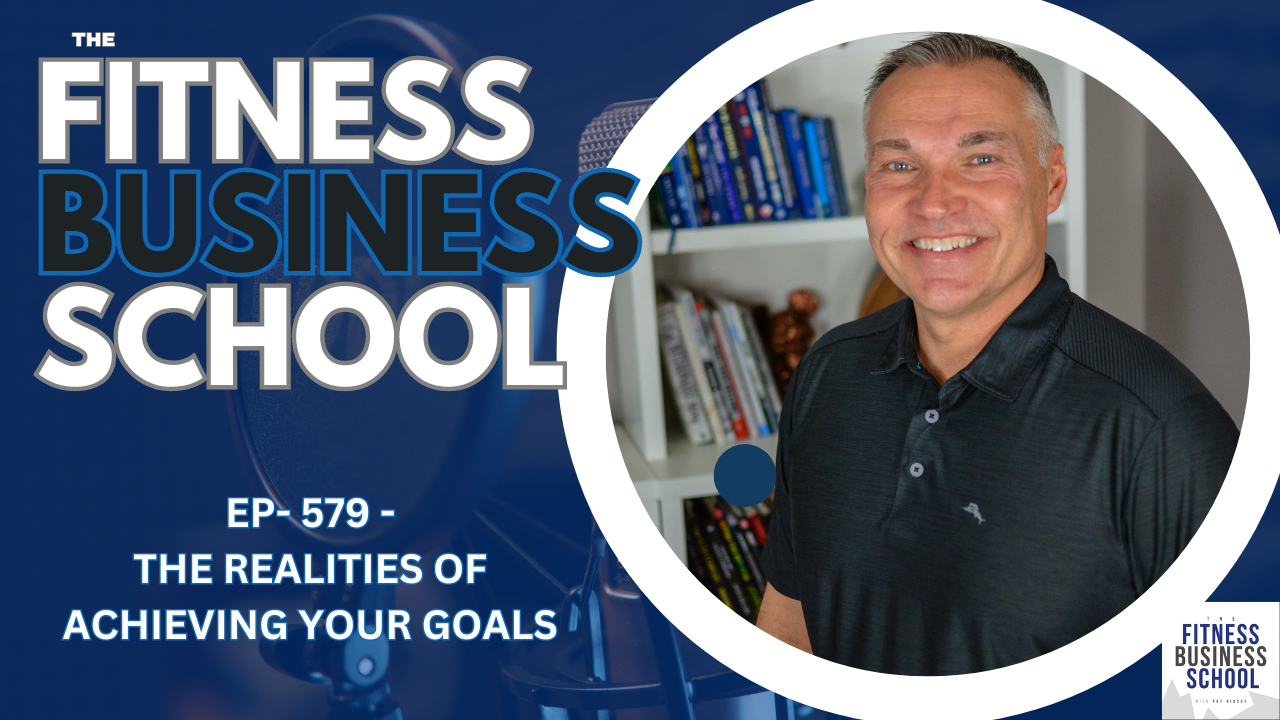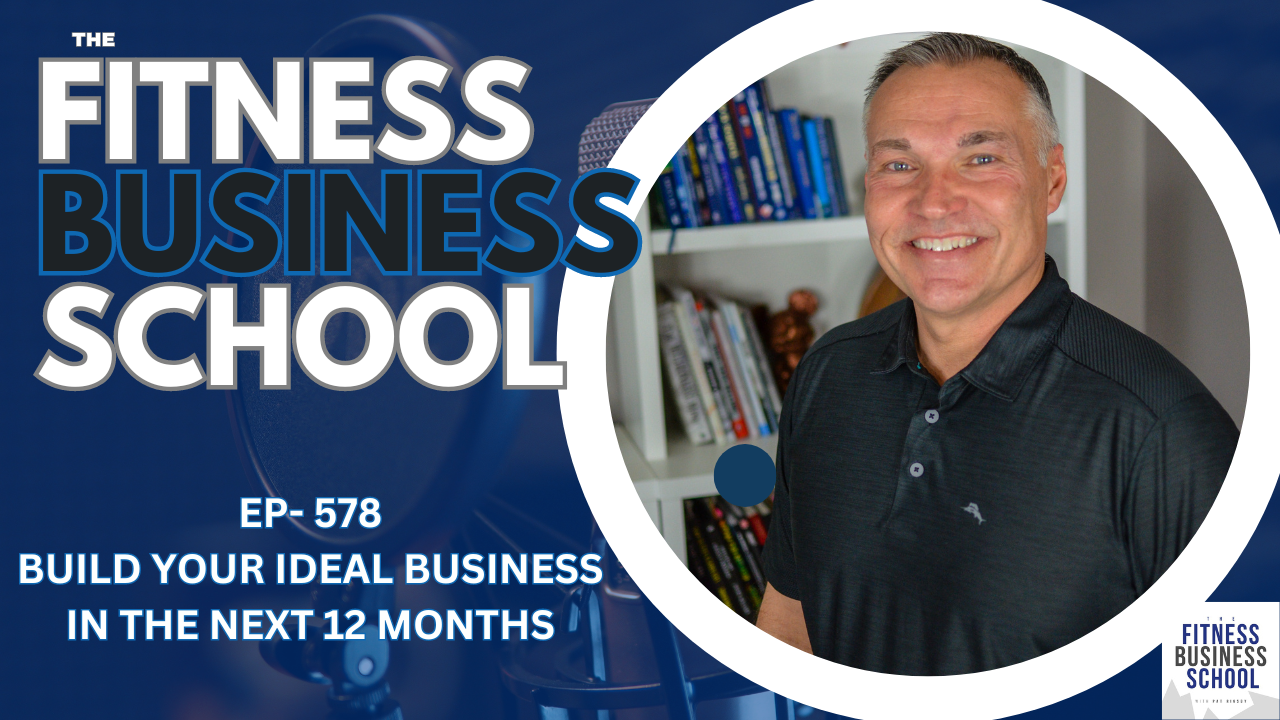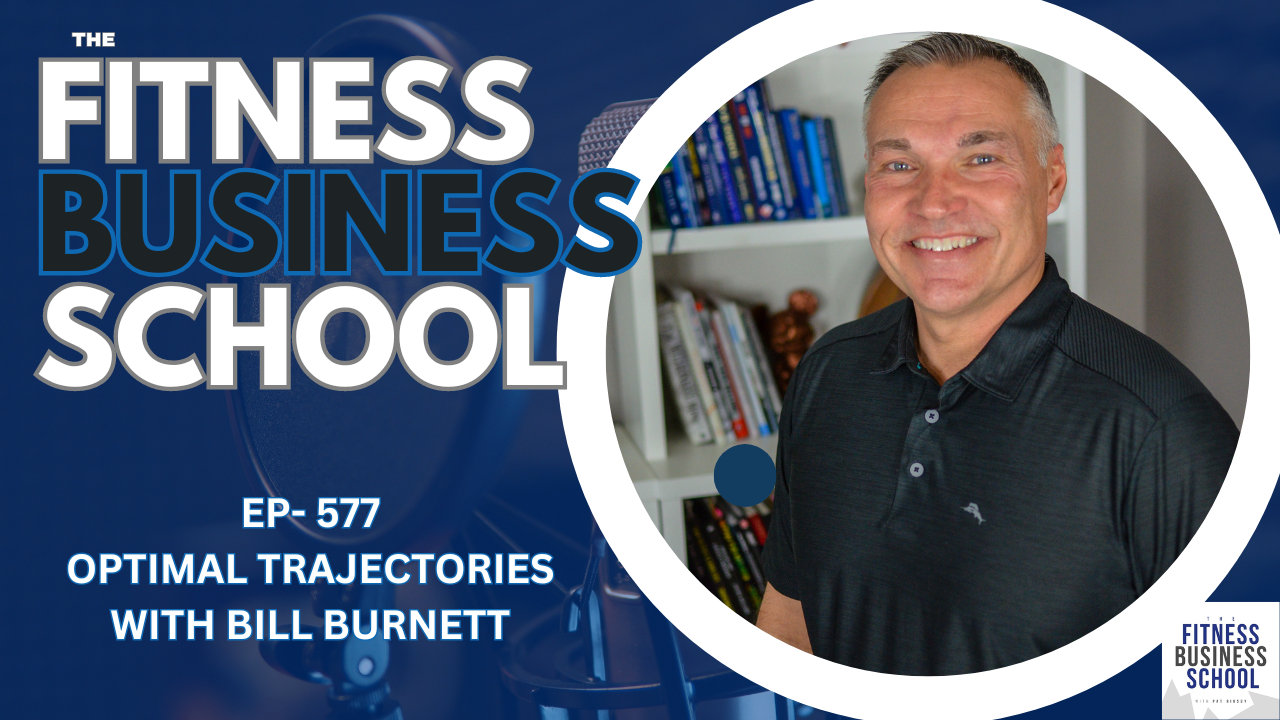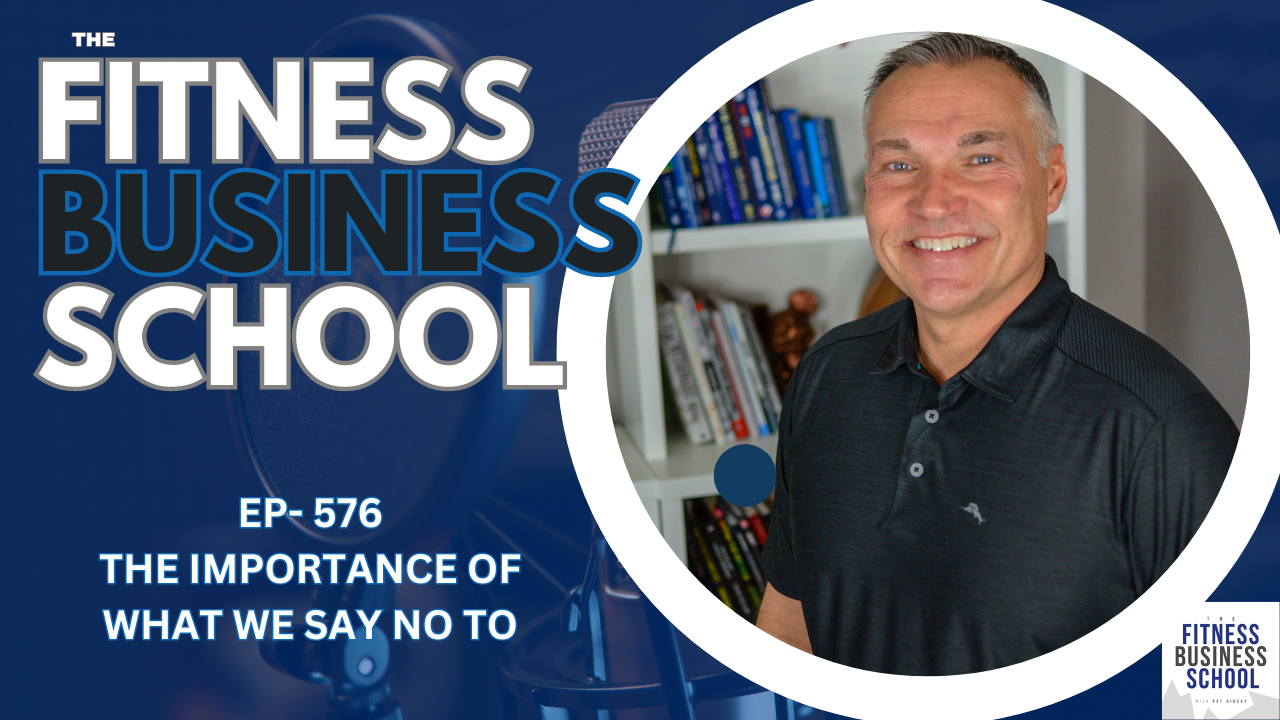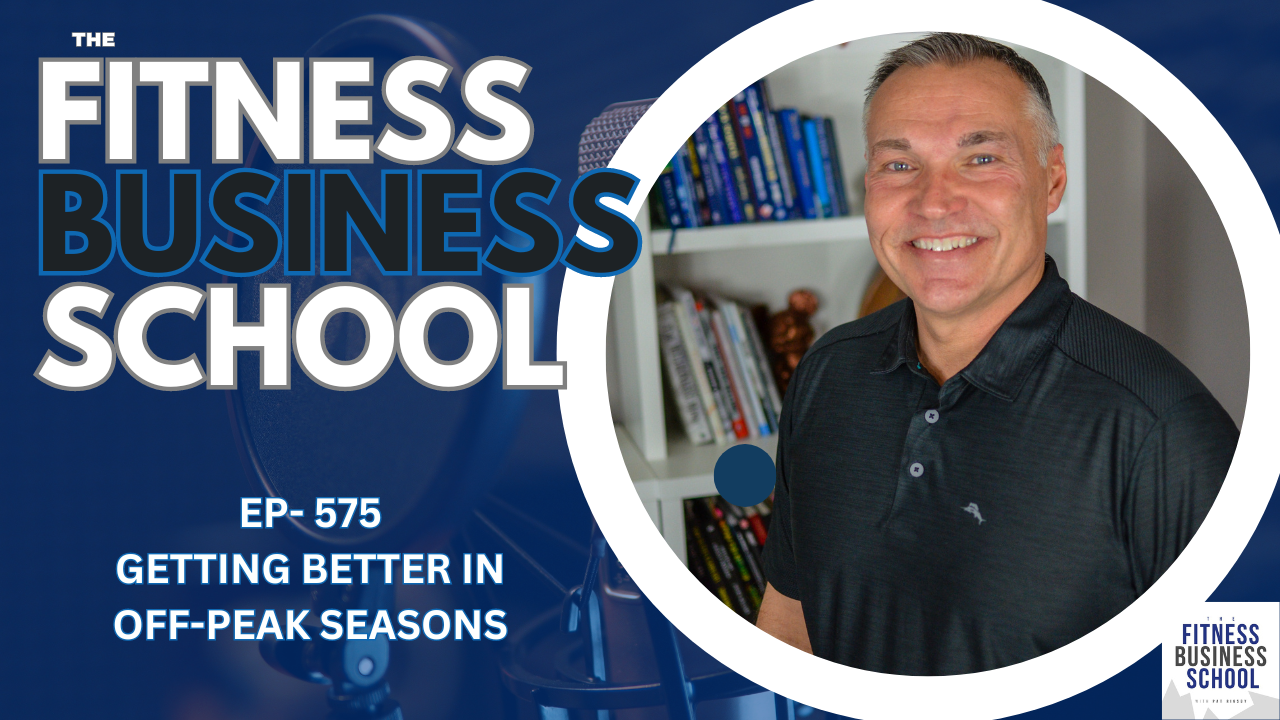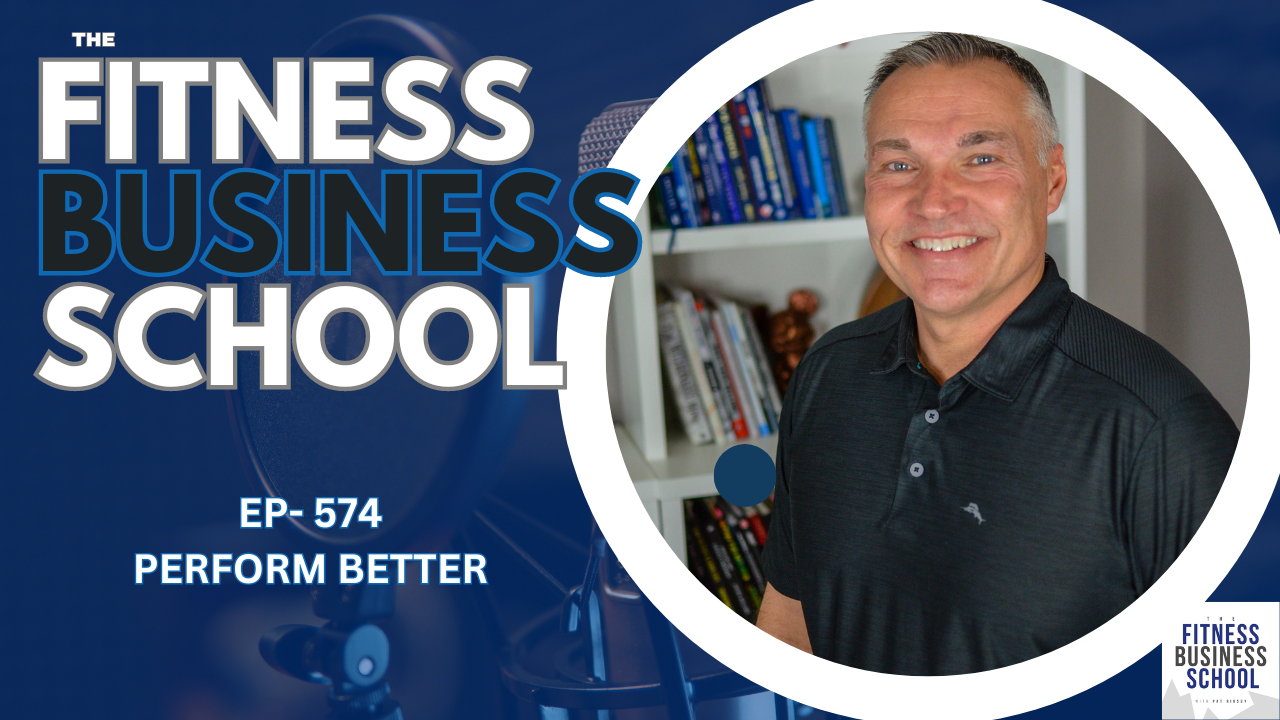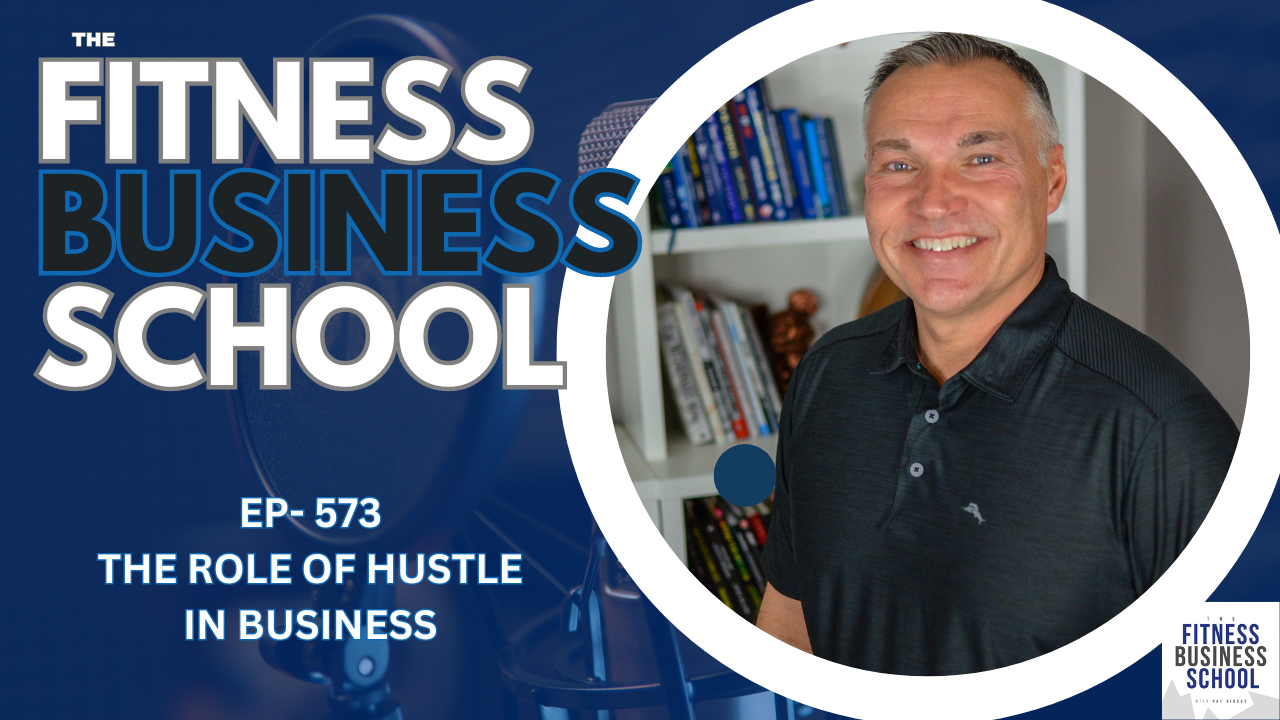Show Notes
00:00 Introduction and Episode Overview
00:29 Guest Appearance on Eric Cressey’s Podcast
01:34 Finding Opportunities in Baseball and Personal Training
03:12 Innovative Business Strategies and Franchising
07:40 Adopting Ideas from Other Industries
09:22 Current Opportunities in the Fitness Industry
16:51 Conclusion and Special Offer
Full Transcript
Hey, Pat Rigsby here and in today’s episode. I want to talk to you about finding opportunities where others don’t. Let’s get to it.
Welcome to the Fitness Business School podcast, the show for fitness business owners who
want to grow their income, increase their impact and improve their lifestyle. Be sure to listen to the end
of this episode because we have a brand new special offer exclusive for listeners. So stay tuned.
Not too long ago, I had the opportunity to be a guest on Eric Cressey’s podcast, which was a tremendous amount of fun for me. It was probably the most fun I’ve ever had being a guest on a podcast and I’ve been on a number of them and most of the time they’ve been great, but it’s one of those rare chances where I got to talk about baseball and business and anybody who knows me knows that’s a pretty fun combination in my world.
Some of the stuff that we unpacked was how I’ve probably been able to enjoy some successes largely by finding some opportunities where maybe other people didn’t. And I wanted to talk with you about a couple examples of that, but then give you, I don’t know if it’s exactly like a system or a framework of how I tend to arrive at those, but I can at least give you some general ways that I think about things and where most of this stuff has arrived along the way.
Like our baseball program when I was coaching college was. Largely built off of maybe taking advantage of areas that other people were not, whether it was the type of players I recruited or an emphasis in things in player development, strength, conditioning and training, things like overload, underload, implement training, some of that stuff that is all very commonplace now, but considering I was doing that stuff in 1998, maybe it wasn’t quite as commonplace then to our first, my first personal training business in a town of 23,000 that maybe when we arrived and open, maybe there were 30 or 40 people in the whole town who had ever worked with a personal trainer and growing that to over 400 clients in the first 18 months, but largely by doing it with 30 minute sessions, selling things on a subscription when most everybody sold stuff in prepaid packages to when I got my start in the business coaching world, there are plenty of people talking about marketing and internet marketing and sales.
And so I became the systems guy, which anybody that spends time around our business now probably laugh considering we, tend to think of Doug is the systems guy in our world, let alone, and he’s probably the best in the industry at it. But that was my point of entry into being an expert.
And that was just claiming a crown that nobody claimed, right? We, like when we launched the pair of franchises that we did, offering them, focusing more on conversions than new startups, focusing, allowing for people to co brand as well as fully brand again, was very much finding an opportunity where others didn’t talking about ideal business instead of just gross revenue or more clients, those things have been some of the things that I’ve been able to do that without making this all about the, just unpacking a case study of each of those experiences, they were all in part rooted in being very observant of both what the remainder of the market was doing.
And where the consumers were being either disinterested the players were not being focused on. Everybody tends to just play follow the leader, right? Like in baseball, everybody sent the same form letters. So I learned copywriting so I could write something different. And baseball, everybody that was in our conference, adhered to the same Team construction approach, the same type of player development stuff.
So I just said, okay, where’s the gap? What can I do differently in training? I felt like in a market, it was very. Very much ordinary income market, not affluent in the center of Kentucky. What were the objections? A lot of it was financial. It was not being willing to pay lump sums and for prepay for big packages of sessions, not being able to stomach The price of our long session.
So what can we sell them that can deliver a result? How can we sell it at a price point that would be more palatable to them? Subscription fit right in line, right? They, and again, that’s commonplace. People do that now in 2004, nobody did that. And we were selling 30 minute sessions and on a subscription.
So their monthly payment would be a lot more palatable. people usually buy most things on installments, whether it’s a car or it’s a house, they’re not paying up sub up front. Franchising. What was the objection with most of the fitness business owners in our market at the time, they didn’t want to give up their identity and give up their ability to have any input.
Or any degree of autonomy in their business, but they wanted a behind the scenes operating system. They wanted to make their life easier. They wanted the benefits of a franchise, but they didn’t necessarily want to conform to feeling like an employee. So designed a franchise that, that kind of met them where they were.
And heck, at the time we had, Cressey sports performance, IFAST with Mike Robertson, Bill Hartman. We had Luca host of our, we had Vince Gabriel. They were all franchisees. Obviously these people are very independent. They are very accomplished in their own right, but because they would benefit from some of that Behind the scenes infrastructure, they were willing to get in line with him because it didn’t hijack their brand or anything like that.
So if you think about it, like being able to craft a franchise model that would be attractive to people of that sort of stature and success. I don’t know that any other franchise would have done that. And then the whole ideal business thing. All you have to do is open up social media and see the ads.
Everybody’s running. Nobody’s talking about ideal business. Still. They’re talking about clients and revenue seeing that. Other people aren’t touching on things that might be important to a particular market. Seeing the market has some unmet needs trying to start by looking at the behavior of the person you’re trying to serve and what they value and what’s important to them.
Those are the things that I continually focus on. And then because Frankly, I am anything but innovative. I just try to be really curious about what goes on in other industries. I’ve never really done much studying what went on in the fitness business landscape. And that was probably a blessing, right?
Like coming into this from coaching at a university, instead of growing up in a health club environment. I don’t want to say I totally ignored the couple of people that were doing business coaching when I got into this, because I went to a couple of seminars the one guy was holding.
I joined a mastermind group another guy had, but most of my input came from other industries. It came from consultants and people outside of fitness. And I would just try to connect ideas. I would just say, okay, what works over here in the hospitality world or what works over here in some of these other professional services, like stuff in the health world, chiropractic or dental or something like that.
What are ideas that I can adopt from businesses across the board, big and small? What are ideas that I can pull from leadership? I can pull from coaching. And then run them through the filter of where are unmet needs or preferences of the market we want to serve. And then what is, where are the gaps in what people are currently delivering?
So I wanted to make sure I didn’t just leave this as vague and open ended. And I wanted to give you a few examples of how I think you Somebody could tap into some of this stuff now in a local fitness business. And the first would be small group training. I think that the large group training landscape is pretty, pretty saturated with franchises.
There are more and more franchises popping up and they almost all follow that same model. And if you understand franchising at all, you understand why. The large group side of it’s so appealing because they can get by with lower labor costs, less skilled team members, and it’s a very leveraged environment, which is the hallmark of franchising, right?
So small group still allows you to have some of those same elements. You don’t have to have a massive team or anything like that, but you’re different. You can sell to an audience that may be a little bit higher up the income ladder, you can attract people who may not necessarily, you’re not competing in this red ocean of.
Large group training. So you get some of the positives of group training, but you get to separate yourself into a different category. So I think small group training is huge. In fact, I would tell you that to me is like business model one, front and center. If you’re going to go get into a training jam or want to reinvent your training gym now.
The other things that actually are interesting, but definitely wouldn’t be as high up the ladder for me as that would be semi private or one on one. I think that the convenience factor of delivering training to somebody’s door, the in home thing, I think definitely has legs. And there’ve been a couple organizations, like a franchise or two that have started to move into that segment.
And I think semi private. It is very sound too, it would, those would definitely be like 2a and 2b with small group being clear cut one in my mind. I think accountability is paramount. I think too many people, they miss out on why clients actually don’t succeed. And at this point we’re in an era where if they want to know what to do, it’s not hard to find.
There’s information available. They can go find YouTube videos. They can learn stuff pretty much anywhere. It’s not access to what to do is not as gated as it used to be, but still getting people to change behaviors, getting people to adopt new habits. There’s a reason why. Atomic habits has been a bestseller every week since it came out because getting people to adopt new habits is really challenging.
And the market understands that now. And so tapping into that and providing accountability and facilitating consistency, I think is a huge opportunity. I think overall wellness. As a more of a messaging thing with fitness instead of just aesthetics. For years, it was, focusing on swimsuit ready and pictures of people who look like cover models on all the direct mail pieces and everything else.
But I think that one of the silver linings that we saw during the pandemic is people recognize that stress relief and just general health improvements associated with exercise were really important and Marketing those benefits to the people that recognize that yeah, maybe some people Don’t recognize that, but I, as a 51 year old, as I record this, the people that recognize some of the benefits outside of just aesthetics are definitely more attractive to me as a marketer than the people who focus entirely on six pack abs and that sort of stuff.
I think that there’s a huge opportunity in offline marketing. The pendulum has swung so far towards the online that Not a, not that many local fitness businesses put a great deal emphasis in the offline side of things. And it’s easier for franchises to facilitate the execution or implementation of online marketing.
And have preferred vendors of ad agencies or SEO agencies that they require their franchisees to invest with. That’s way easier than getting people to be good at going to networking meetings or doing public speaking or forming strategic alliances or doing neighborhood marketing. But that leaves a pretty powerful opportunity for you.
And then finally, there’s just not that much actual coaching going on. There’s instruction. There’s access to workouts or equipment, but coaching, like being the guide and that partner in somebody’s journey and helping them go from where they are to where they want to be. There’s just not that much of that.
It’s almost like people try to squeeze that out of whatever business that they’re involved in. And they miss the mark. I think that. That’s okay if they want to do it. I’m not going to do it as a business owner. And frankly, I’ve seen a lot of the people that would have touted themselves as coaches when I got into this exit, the coaching side of this as quickly as they could, and they’ve not talked to a client or customer and ages in a coaching environment.
Frankly, the coaching stuff’s the part of it that I love. And. I think that if you were somebody who is similar in that regard, if you enjoy coaching a great deal to double down on it and be the coach when everybody else is trying to automate everything and take the human element out of stuff, double down on the human side of it because there’s going to be a gap and certain people are going to be able to take advantage of that gap because let’s face it, there are no shortage of apps in the app store that Can counter macros and can serve as some sort of accountability that doesn’t really work just, we know it because it’s not solved the problem.
And if you could solve the problem with an app for 2.99 a month, then this still wouldn’t be a concern. Those gaps are opportunities for you. So if you. If you want to build a better business, if you want to move closer to your goals, I’m not going to tell you for a moment that this is the only way to do it because there are plenty of people that have done great things, approaching things in a completely different fashion than me and have probably accomplished way more.
But for me, finding opportunities where others have glossed over, overlooked, or just, exited has been the where I found most of the professional success I’ve been able to enjoy so that’s how I’ve done it. Maybe it’ll work for you, too.
Thanks for listening to this episode of The Fitness Business School.
Before you go, I have a quick announcement:
One of of the things that we’ve been doing with our current clients is taking them through this Ideal Business diagnostic and really what it is, this checklist that allows you to pinpoint exactly what your business needs next so you can keep improving, keep growing, and build a business that you love to own, one that pays you well, one that allows you to have the impact you wanna have and one that allows you to have a lifestyle that you truly enjoy.
In this diagnostic, we walk through everything and we do an evaluation and can instantly pinpoint what you need to do next to build that business that you want. I’m going to extend this opportunity to get on with either me or my team and take you through this evaluation and fix your business’s most vital needs fast.
So if we take you through this, you’re gonna be able to make those vital changes that you need to finally have what I call your Ideal Business. If you’d be interested in going through this entirely free, risk-free diagnostic with us and learn what you already have in place, what you’re doing well and where are your greatest opportunities for rapid improvement are just shoot me an email with diagnostic in the subject line to [email protected].
Again, an email to [email protected] with diagnostic in the subject line will get
you scheduled and take you through this evaluation to help you build the business you want.

